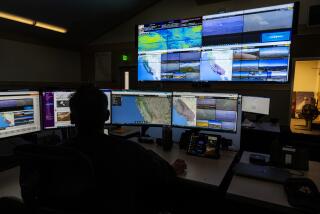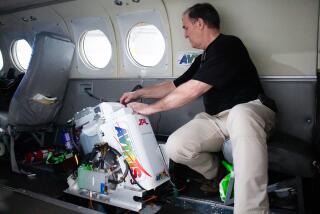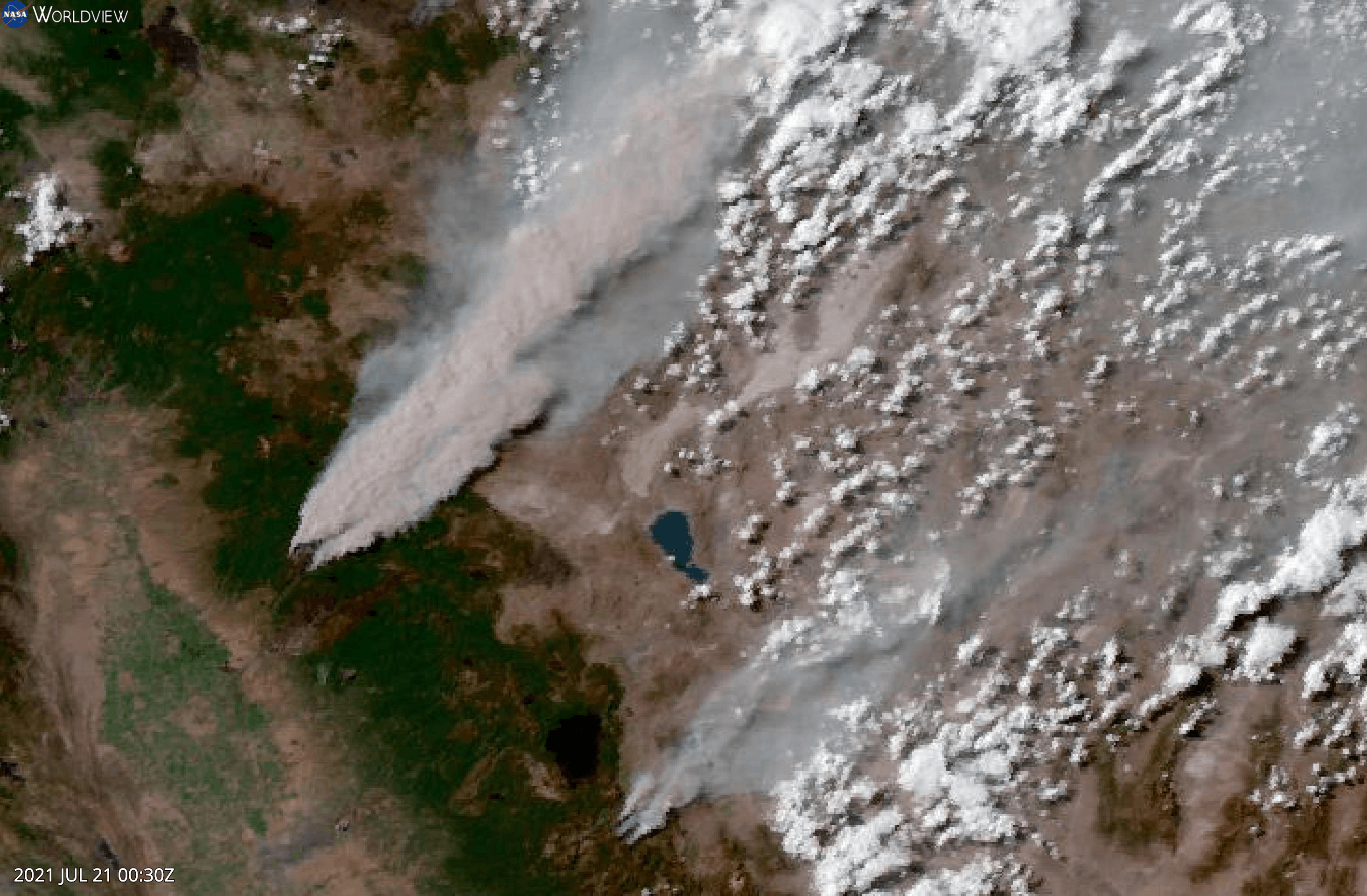NASA Details Program to Study Earth From Space
- Share via
The National Aeronautics and Space Administration unveiled details Tuesday of the most ambitious program ever undertaken to study the Earth as a single ecological system.
Called the Earth Observing System, the U.S. portion of the multinational project would cost well above $2 billion, and it would use a wide range of orbiting laboratories. The satellites could do such things as detect tiny movement along the San Andreas Fault and provide continuous measurement of changes in the ozone layer that protects the planet from harmful solar radiation.
Some early benefits could be vast improvements in weather forecasting by permitting meteorologists to study developing weather patterns instantaneously around the globe.
“This will bring about a revolution in our understanding of the Earth as a whole system,” Dixon Butler, NASA’s program scientist on the project, told scientists around the country via a satellite hookup with the agency’s various centers, including the Jet Propulsion Laboratory near Pasadena.
Although the program has been under study for several years, it has now moved into high gear largely because of a growing number of ominous changes in the Earth’s atmosphere that cannot be understood without a worldwide effort, Butler said.
The so-called greenhouse effect, a global warming trend brought on by an increase in carbon dioxide in the atmosphere, “is part of the driving motivation” behind the project, said Butler, who spoke to the scientists from NASA’s Goddard Space Flight Center in Greenbelt, Md.
“We need the intellectual resources of all mankind,” he said. “We must have international cooperation.”
Although only the planning stage has been funded so far, the program is “a critical element in NASA’s strategic plan” and has a very high priority within the space agency, said Charles Redmond, a spokesman for NASA’s science division. The agency is asking for about $20 million in next year’s budget to “define the instruments” that will be needed and, in 1991, it will ask for the funds to build the hardware, Redmond said.
The heart of the program will include four platforms--two from the United States, one from Europe and one from Japan--that will be launched into polar orbit around the Earth by the participating countries. Instruments on the platforms will be able to monitor the entire globe as it rotates within their orbits.
There is also a possibility that the Soviet Union, which has many satellites in polar orbit, will take part in the program, Butler said.
‘Nibbles’ From Soviets
“We’ve had the first nibbles” from the Soviets, he said. “We’re trying to follow up in a broad number of areas.”
NASA has received about 870 “letters of intent” from scientists and groups planning to propose experiments for the program, Butler said. The purpose of Tuesday’s satellite conference was to outline the space agency’s requirements for participation. Proposals must be submitted this summer, and the agency plans to launch the first platform in October, 1995. The European Space Agency has penciled in a launch date of March, 1997, for its platform, and NASA could launch its second platform in April of that year. Japan is aiming for a 1998 launch.
Additional instruments are scheduled for the permanent manned space station, now scheduled for operation in the mid-1990s, but the Earth Observing System is being designed so that it can be deployed even if the station is delayed because of budgetary or technological problems.
NASA’s first platform is to be a large facility, measuring about 60 feet long.
“This is big business,” Butler said.
It will be equipped with six primary NASA instruments, plus up to 14 other instruments that scientists are now being asked to propose.
‘Wide Open’ Project
“It’s wide open” in terms of what kind of experiments NASA will accept, Butler emphasized. “We are saying to you, the scientific community, this is your mission. Give it your best shot.”
The six primary NASA instruments include two from JPL: a high-resolution spectrometer, which will provide images of smaller features on the ground, and a synthetic aperture radar, which uses radar waves to create images that would otherwise be hidden by clouds or vegetation.
“JPL also has a very good opportunity for a number of other proposals,” said Jim Graf, the lab’s program scientist for the project.
Other NASA instruments aboard the first platform include a “geodynamics laser ranging system” that could detect even the slightest changes along such geological features as the San Andreas Fault, Butler said.
Mirrors on the Ground
Scientists will “shine the laser down in pulses to measure the distance to mirrors on the ground,” he said.
Mirrors installed along the San Andreas could be hit on a single pass, he said, detecting movement as little as half an inch along the entire fault.
Other NASA experiments will include a “laser atmospheric wind sounder,” which will use the Doppler effect to measure the speed and direction of winds in the lower atmosphere; an “atmosphere infrared sounder” to measure temperature and moisture in the air, and a “moderate resolution imaging spectrometer” that will provide a constant stream of images of the globe.
The platforms will be designed to remain operational for at least 15 years, although robotic spacecraft will be able to service each platform every three years, changing some instruments and updating others.
Scientists with experiments aboard the platforms will not be able to keep their research data to themselves, however.
“There will be no exclusive data,” Butler said. “The data will flow to the scientific community. It’s not going to be locked up.”
That is essential, he said, if the program is to be truly global.






